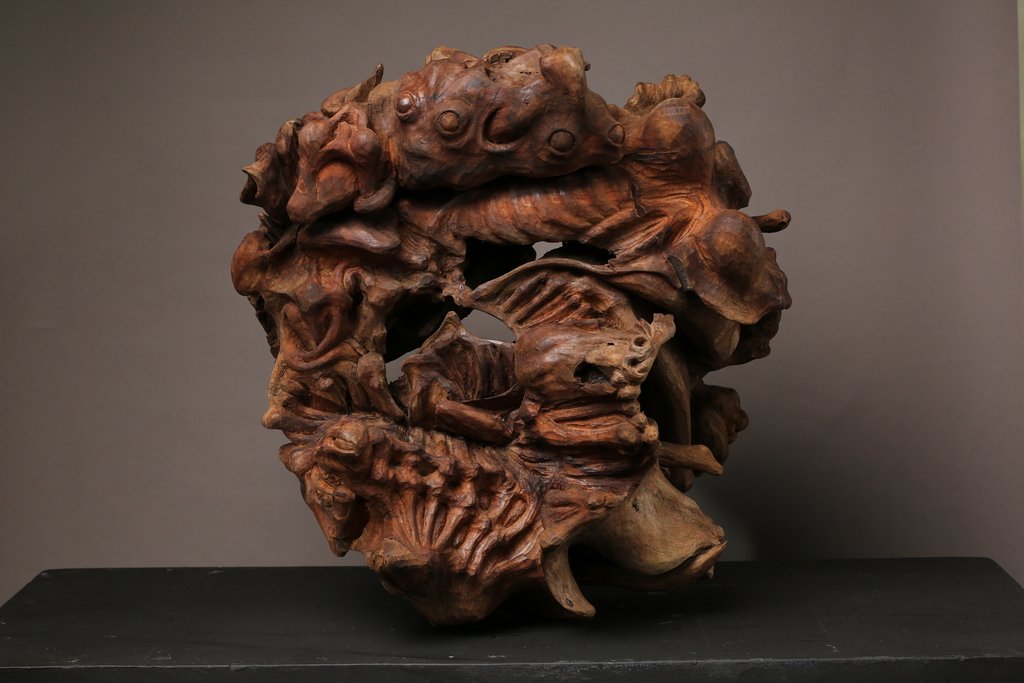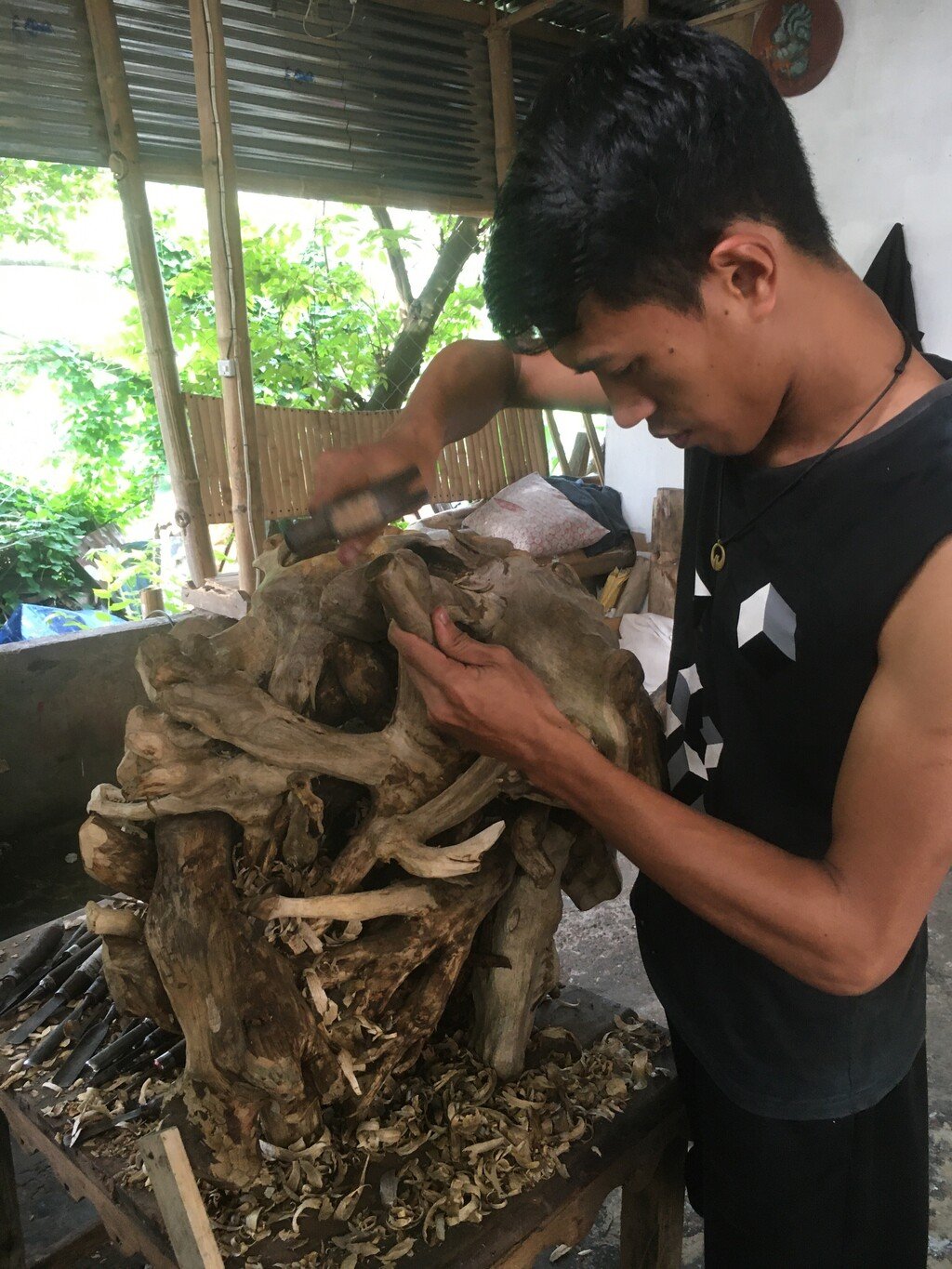Introduction and Interview Gabrielle de la Cruz
Images Metrobank Art & Design Excellence and Jun Orland Espinosa
Two Special Citations are often given by the Metrobank Art and Design Excellence (MADE) Awards every year. One particular piece stood out this 2022 and had the Special Citation recipient title all to itself, ‘Underneath’ by Jun Orland Espinosa. The winning sculpture, a mixed media work that made use of typhoon-uprooted roots, challenges the viewer to look closer and deeper, captivating the jury with its technique and poignant message.
What follows is Kanto’s conversation with Espinosa, where he recalls the genesis of his winning work along with his goals as a Filipino sculptor.


Hello, Orland! Do recount your MADE journey. How was ‘Underneath’ formed?
Personally, I saw MADE as an open door, an opportunity to express and perform as an artist.
For ‘Underneath’, I started by conceptualizing the narrative, imagery, and materiality of the artwork. I decided to use uprooted roots from the aftermath of Typhoon Odette, which took me two months to find. Once I had them on hand, I started to do detailing and burning certain parts of the roots.
The detailing took more or less two months and was the longest part of the entire process. Clearing the stocked mud and stones and peeling the skin of the roots took two weeks.
Towards the end, I performed the final and one of the most important processes, which is the coating and treatment of the sculpture. This is done by submerging the entire piece in a chemical to prevent deterioration that is usually caused by wood-eating insects.
Why did you opt for uprooted roots to depict your vision? What is it about the usage of wood that speaks to you?
Wood carving is my first love. I started creating ornamental wood sculptures in furniture shops as early as 13.
I chose roots because they represent life and they hide underneath the earth’s surface. To me, they are fitting symbols to depict my message, which is faith.
Trees face super typhoons, heavy rains, floods, and destructive wind. The uprooted roots serve as a tree’s last resort to survive. However, the uprooted roots will need to reach the ground in order to live again.
We are like trees and our individual faiths uprooted roots. Faith with action endures dying hope. We cannot stop the calamities of life, but we can reverse the aftermaths. Strengthen your faith and stop doubting; doubt is an enemy of faith.
Faith inbounds deeply underneath our hearts. It creates hope that restores life.
With faith as your central message, why did you choose monstrous symbols for your winning piece? What makes these images effective in communicating your main message?
At first sight, my goal is to create a mark in the consciousness of the viewers. Macabre images can leave wounds in their emotions. I want them to capture darkness so that they will be motivated to seek the light.
The apocalyptic scene of the artwork encourages one to keep faith. Faith must be more potent than personal calamities to conquer the chaos. Through this, I also want to remind everyone that God doesn’t look on the eyes nor the lips, he peeks through what is underneath our hearts, the homage of our faith.
‘Underneath’ is reflective of your concern for how people deal with disasters, calamities, and severe problems. How often does this theme recur in your work?
Most of my works are subconsciously driven. I refer to this process as Personal Realism, which is all about my reflections on what occurs within my environment. The idea is to be in touch and fully aware of my emotions and realizations so that I can transpose them visually.
We are currently living at a time when the environment is suffering from calamities and typhoons due to climate change. In line with this, there are also personal losses and tragedies that each of us experiences. I have been trying to depict all emotions in relation to these through my art since 2019.


With your piece now recognized, how do you see your work and what you do contributing to the greater conversation in Philippine art?
My goal as an artist is to create massive installations using found objects, conduct wood sculpture workshops using salvage wood as major material and make use of alternative spaces such as basketball courts, warehouses, and abandoned factories to conduct exhibitions. I am also opening myself up to other sculptural mediums.
We are now living in a modern age. Contemporary art has a very wide scope. My dream is to push the boundaries of traditionalism in terms of materiality and process. I believe that we must keep our culture while being open to new ideas and new possibilities. •
Gabrielle de la Cruz started writing about architecture and design in 2019. She previously wrote for BluPrint magazine and was trained under the leadership of then editor-in-chief Judith Torres and previous creative director Patrick Kasingsing. Read more of her work here and follow her on Instagram @gabbie.delacruz.



